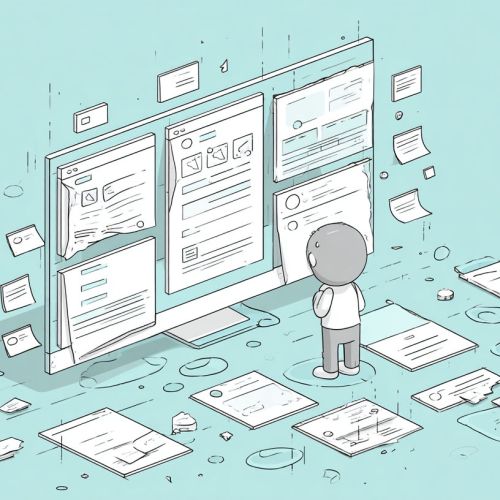The rise of zero-click SEO is reshaping the digital marketing landscape fundamentally. As Google’s AI Overviews increasingly surface direct answers on the search results page, businesses face a startling reality: up to 34% of clicks that once fueled traffic and revenue simply disappear. For mid- to senior-level marketing leaders tasked with growth, this shift challenges traditional monetization models dependent on organic search traffic.
Imagine opening your analytics dashboard to see your website traffic plunge—not because your content has declined in quality or relevance but because Google’s AI has decided to answer user questions for them. This emerging reality is striking marketers and business leaders alike across industries from finance and healthcare to retail and B2B. It threatens to corrode long-established performance indicators and revenue streams tied closely to search engine click-throughs.
Yet within this challenge lies an opportunity. By embracing zero-click search optimization and rethinking how we capture and retain audience value, marketing teams can survive—and even thrive—in a clickless world. This article explores the phenomenon of Google’s AI Overviews, helps you diagnose your business’s revenue risks, and presents practical, AI-driven strategies that preserve engagement and conversions.
Prepare to rethink content creation, SEO, and revenue attribution in an era where traffic is no longer a given. The future belongs to those who master the art of the zero-click survival.
Understanding Google’s AI Overviews and the Zero-Click Threat
Google’s transformation from a link directory into an AI-powered answer engine has accelerated rapidly with the rollout of its AI Overviews. Sometimes called the Search Generative Experience (SGE), these AI-driven responses offer comprehensive summaries directly on the search engine results page (SERP). The promise is clear: faster, more convenient answers. The consequence for marketers: a looming zero-click SEO crisis.
What Are Google’s AI Overviews?
Google’s AI Overviews use generative AI models to synthesize information pulled from multiple high-authority sources, delivering concise, well-rounded answers right in the search results. Rather than clicking through to websites, users get instant summaries that often satisfy their queries on the spot.
These AI snippets blend text summaries, bullet points, and sometimes multimedia, all generated dynamically. The objective is to improve user experience by reducing search friction. But for marketers, this model diverts valuable clicks away.
The 34% Click-Loss Figure: What It Means
Research from Rand Fishkin’s SparkToro in early 2024 highlights a striking statistic: approximately 34% of traditional search clicks have evaporated since the launch of these AI Overviews. This figure is not merely academic. It represents a near one-third reduction in potential organic traffic for businesses relying on Google Search as a primary acquisition channel.
Why is this significant? Organic traffic accounts for a substantial share of leads, conversions, and revenue for many sectors—especially those driven by high-intent queries. Losing over a third of these clicks to Google’s “answer box” means lost opportunities and squeezed monetization.
High-Impact Verticals Facing the Brunt
Certain industries are acutely affected by zero-click SEO since their queries often suit quick AI summaries.
- Finance: Product comparisons, interest rates, investment advice—Google answers many basic financial questions instantly.
- Healthcare: Symptom checks, drug info, and treatment options now commonly appear in AI-generated snippets.
- Consumer Goods and Travel: Quick price checks, availability, or destination insights reduce user clicks.
The result is that verticals with high commercial intent but straightforward informational queries suffer disproportionate losses of site visits.
Changing User Behavior: Info-Satisfaction vs. Site Visits
Users today exhibit a growing preference for info-satisfaction—quick answers that meet immediate needs—over deep site explorations. Google leverages this trend to keep users on its platform longer, reducing the need to click outward.
While this enhances user convenience, it forces marketers to reconsider success metrics. Traditional SEO celebrated impressions and clicks; zero-click SEO demands an appreciation for how much value you provide without a click.
Expert Perspectives and Industry Insights
Lily Ray, SEO Director at Amsive Digital, remarks, “We’ve seen clients experience double-digit drops in organic traffic on highly valuable pages after Google integrated AI Overviews. The key is not to fight the AI but to complement it with distinctive content strategies.”
Industry sources like Search Engine Land reinforce that zero-click search optimization is no longer optional but essential for SEO professionals.
Diagnosing Your Revenue Risk in the AI Search Era
Understanding your exposure to zero-click SEO’s impact is the first step toward building resilience. Not every business or web property is equally vulnerable, but all need to assess risk scientifically.
Conducting an Audit of Current Traffic Sources
Start by using Google Search Console (GSC) and analytics platforms to identify your most valuable organic keywords and pages. Look beyond impressions to focus on click-through trends over recent months, correlating changes with the timing of AI Overview rollouts.
Key questions to address:
- Which queries are now dominated by AI Overviews?
- What percentage of your high-converting keywords have seen falling CTRs?
- Are certain sections of your site impacted more heavily?
Monitoring Shifts: Impressions vs. Clicks
GSC provides a detailed breakdown of impressions versus clicks on search results. If impressions remain stable but clicks crash, it’s a strong indicator that searchers are receiving enough info from Google’s AI snippets without visiting your website.
Tracking these trends over time helps isolate organic traffic loss attributable to zero-click search behaviors rather than seasonal or broader SEO issues.
Calculating Revenue at Risk
Once you identify vulnerable keywords and pages, map those traffic losses to actual revenue. For example, if a product landing page historically drives 10,000 monthly visitors at a 3% conversion rate and average order value is $150, a 30% click loss could mean tens of thousands in lost monthly revenue.
Developing such a framework quantifies the stakes clearly for internal stakeholders.
Segmenting Vulnerabilities by Audience and Product
Not all products or services rely equally on organic search. Segment your business units or revenue streams to understand where zero-click SEO hits hardest. For instance, a B2B SaaS product attracting niche, high-intent searchers may be less affected than a consumer-facing e-commerce brand targeting broad informational queries.
Benchmarking Competitor Behavior
Use competitive SEO tools like Ahrefs, SEMrush, or SpyFu to benchmark rivals’ visibility in AI-generated search features. This intelligence reveals whether competitors are adapting better and capturing alternative traffic channels.
Content Strategies for Zero-Click Survival
Adapting content in the age of AI Overviews means shifting away from purely chasing clicks toward delivering undeniable value upstream in the customer journey.
From Keywords to Brand-Anchored Content
Rather than narrowly targeting transactional keywords, invest in brand-focused content that builds authority and awareness independent of immediate clicks. Brand recall helps push audiences further along the funnel even if the initial search doesn’t deliver direct traffic.
Optimizing for AI Overview Visibility
Leverage AI-driven SEO strategies by optimizing for featured snippets and other rich results. This involves:
- Implementing schema markup to signal to Google the structured data on your pages. Schema helps search engines better understand your content and increases the likelihood it will be used for AI Overviews.
- Creating concise, authoritative answers within your copy tailored for snippet extraction.
- Maintaining high E-A-T (Expertise, Authority, Trustworthiness) to win Google’s trust.
Utilizing Multimedia and Interactive Content
Multimedia assets—videos, infographics, interactive tools—are less likely to be fully captured within Google’s AI snippets. Incorporate these to offer distinctive, immersive experiences that drive users to engage beyond summary answers.
Owning the Narrative Through Original Research and Tools
Google’s AI cannot easily replicate original data or proprietary tools. Content that presents unique insights, in-house research reports, or interactive calculators not only attracts clicks but builds long-term brand equity.
Nurturing Later Funnel Engagement
Since initial clicks may decline, develop strategies to capture demand downstream. Build email lists or social audiences from your existing touchpoints, then use remarketing or personalized communications to turn initial brand awareness into conversions
Engineering New Revenue and Conversion Pathways
Survival in a zero-click SEO world requires innovative tactics to capture value when site visits dip.
Driving Direct Engagement Beyond Search
Turn your SERP presence into subscriber acquisition opportunities. Use lead magnets, newsletters, or SMS sign-ups prominently on pages optimized for search to grow owned channels that don’t rely on Google clicks.
Leveraging Conversion-Focused Tools in Search Results
Deploy tools or calculators that users can engage with directly in search listings or quick snippets. This may include pricing estimators, eligibility checkers, or diagnostic quizzes optimized to surface in search results.
Enhancing Landing Pages for Micro-Conversions
Redesign product and service pages to encourage quick wins—downloading PDFs, requesting quotes, booking demos—that nurture buyer intent progressively.
Moving Upstream Through Partnerships and Syndication
Build reach beyond Google by syndicating content on industry portals, partnering with influencers, or guest-featuring on authoritative sites. This diversifies inbound traffic pathways and circumvents exclusive reliance on search clicks.
Testing Alternative Monetization Tactics
Explore non-traditional revenue streams enabled via your web property, such as sponsored content, gated premium resources, or subscription access to proprietary data. This helps compensate for click erosion.
Measurement, Attribution, and Proving Value Beyond Clicks
With traffic numbers declining, marketers must reframe how they measure impact and ROI.
Redefining Success Metrics
Focus on indicators like:
- Brand awareness growth, via branded search volume uplift
- Engagement on owned channels (email open rates, social interaction)
- Time on page and scroll depth as proxies for content consumption
These metrics capture value created even when clicks do not occur.
Attribution Models for AI Overview Exposure
Traditional last-click models fail to credit “invisible” influence from AI Overview impressions. Incorporate multi-touch attribution and view-through conversion models that assign value to upstream exposure.
Leveraging Surveys and Brand-Tracking Tools
Deploy brand-lift surveys and awareness tracking platforms to quantify shifts in audience sentiment, trust, and intent generated by AI Overview visibility.
Technology Solutions for Off-Site Impact Measurement
Analytics platforms such as Google Analytics 4 (GA4) and custom dashboards integrate multiple datasets to uncover hidden user journeys, including how AI-influenced searches impact eventual conversions.
Embracing A/B Testing for Continual Learning
Experimentation is vital. Test different content formats, schemas, and engagement tactics to learn what resonates best within the zero-click environment.
Future-Proofing: What’s Next in Search and Revenue Retention
Preparing your marketing organization to thrive requires a forward-looking stance on search evolution.
The AI-Driven Search Landscape Expands
Microsoft’s Copilot, Perplexity AI, and other emerging platforms increasingly compete with Google’s AI Overviews, creating a fragmented search ecosystem. Diversifying presence across these channels mitigates risk.
Regulatory Dynamics Could Shift the Playing Field
Antitrust pressures on Google may lead to policy changes impacting zero-click results. Stay informed and agile.
Innovations in Content Protection and Attribution
Future tools may enable better content control, “answer prevention,” or monetization of AI-derived summaries. Early adopters will benefit.
Emphasizing Community and Owned Channels
As earned and paid search clicks become less reliable, cultivating proprietary audiences on social, newsletters, and communities becomes paramount.
Building a Responsive Revenue Team
Hire and train talent skilled in AI SEO, data analytics, content innovation, and cross-channel marketing to build resilience.
Conclusion
Google’s AI Overviews and the rise of zero-click SEO pose a daunting challenge for marketers: sustaining revenue with fewer guaranteed clicks. However, by understanding the scope of the risk, adapting your content to complement AI-generated answers, engineering new revenue pathways, rethinking measurement, and future-proofing your approach, you can survive and thrive.
The key lies in agility, experimentation, and embracing AI-driven SEO strategies while doubling down on brand authority and audience owned channels.
Start today by auditing your revenue risk and testing new zero-click search optimization tactics. The zero-click future is already here—how is your team preparing to survive it?
What strategies have you found effective in tackling the challenges of zero-click SEO? Share your insights or questions below. For deeper guidance, consider downloading our comprehensive revenue retention playbook tailored for AI-driven search landscapes.






